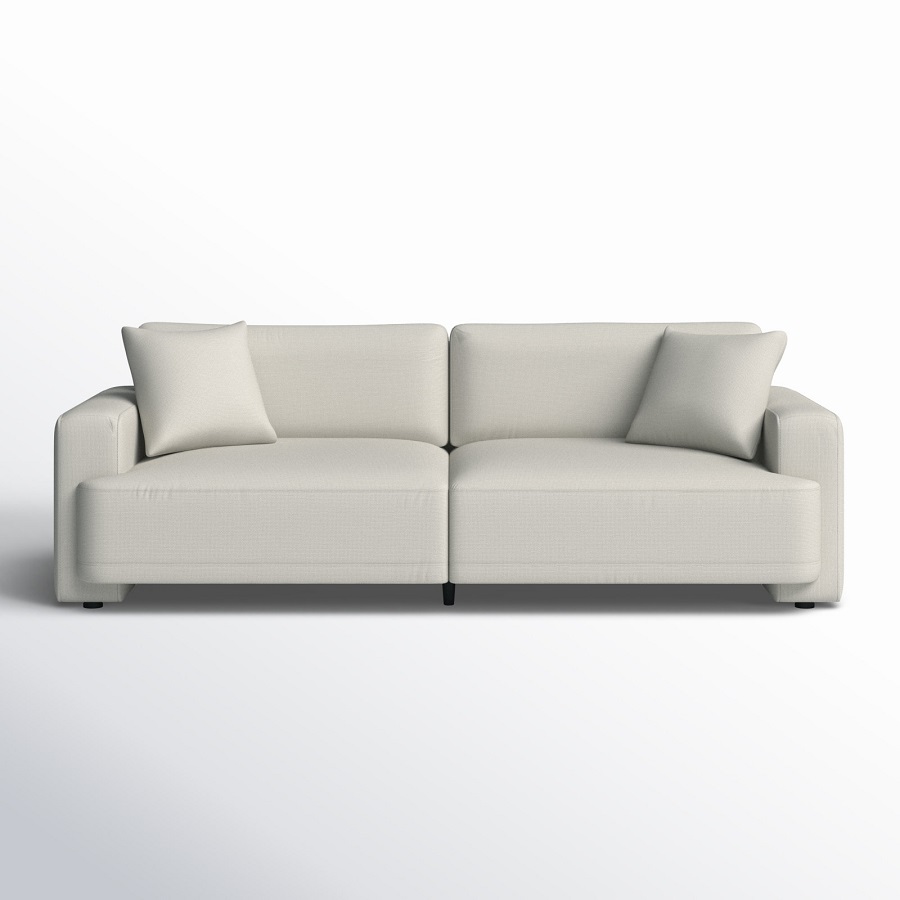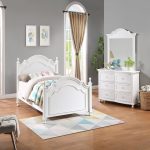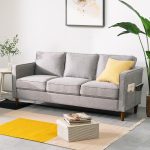Sofa Sizing Fundamentals
Navigating the perfect sofa for your space is a must for both comfort and style. Getting the size right means measuring your space, understanding sofa dimensions, and considering how the sofa’s size will impact the room’s layout and functionality.
How to Measure for the Perfect Fit
To ensure your sofa fits perfectly, you’ll need a tape measure, notepad, and a clear vision of where the sofa will go. Measure the area’s length, width, and height, and consider doorways and walkways to ensure ease of movement around the sofa.
Understanding Sofa Dimensions: Length, Depth, and Height
Sofa dimensions are crucial in the selection process. Length affects how many people can sit, depth influences comfort and fit for different body heights, and height contributes to the sofa’s presence in a room. Standard lengths range from 70 to 96 inches, depths are typically 31 to 40 inches, and average heights sit at about 30 to 36 inches.
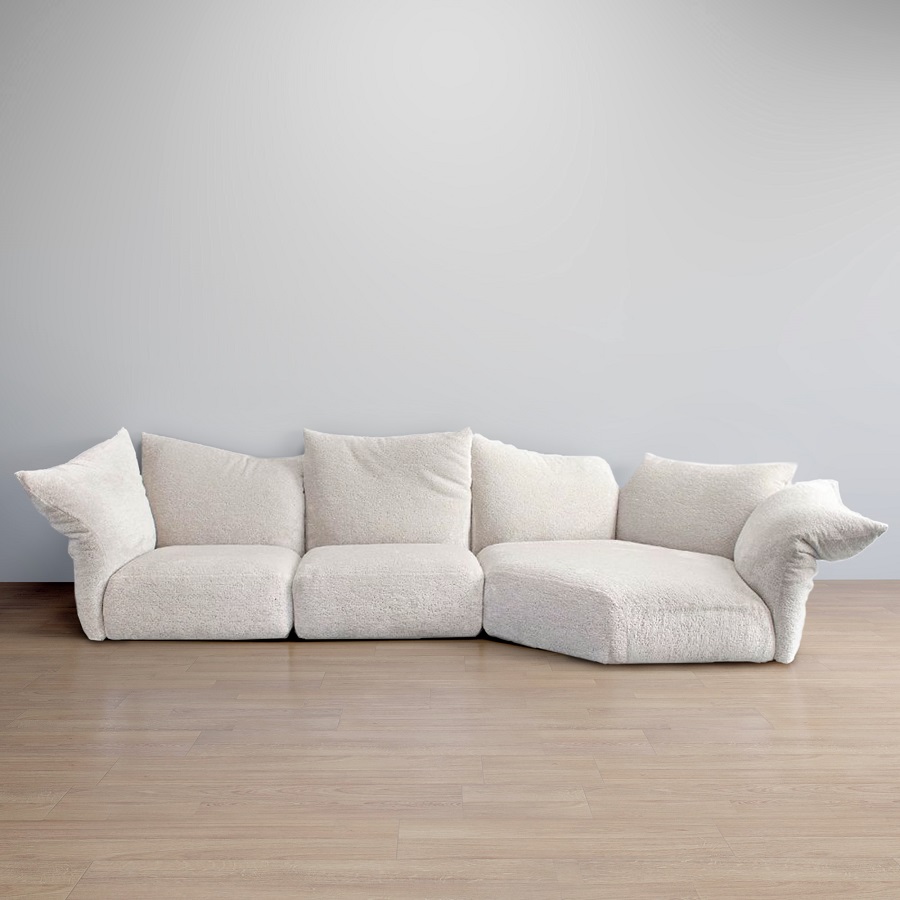
Standard Sofa Dimensions
When selecting the right sofa, knowing the average standard sofa size is essential for planning your space effectively. From cozy 1-seaters to expansive 6-seaters, the dimensions play a pivotal role in ensuring the right fit and aesthetics for your living area.
Average Sizes of Sofas: 1-Seater to 6-Seater
Typically, standard sofa sizes vary by type:
- 1-seater sofas, or armchairs, usually measure around 30 to 40 inches in length.
- 2-seater sofas, often referred to as loveseats, have a length that averages between 52 to 71 inches.
- 3-seater sofas often range from 70 to 87 inches in length, providing ample seating for a small family.
- For larger households, 4-seater sofas can range from 88 to 96 inches, while 5-seaters may extend to 110 inches.
- The spacious 6-seaters are the largest, generally measuring over 110 inches in length.
These sizes give you a framework to start with, but always measure your space to ensure fit.
Loveseats and Settees: Compact Comfort
Loveseats and settees are go-to options for smaller spaces or as complementary seating. Their compact size, usually around 52 to 71 inches in length, makes them versatile for various room settings without compromising on comfort.
The Grandeur of L-Shaped Sofas
L-Shaped sofas add a luxurious and spacious seating option ideal for larger living spaces. They typically range between 370 to 390 cm in width, offering generous room for family and guests to gather. When opting for this grandeur, ensure your room dimensions can accommodate its commanding presence.
Remember, whether you’re choosing a petite settee or a grand L-shaped sofa, the key is to balance functionality, comfort, and the overall aesthetic of your living area while adhering to these standard sofa dimensions.
Maximizing Comfort
Comfort is paramount when selecting a sofa. Optimal depth, proper height, and appropriate length contribute to a relaxing experience.
Determining Ideal Sofa Depth
Choose a sofa depth based on your height for maximum comfort. Taller individuals may prefer a deeper seat, typically up to 40 inches. Shorter people might enjoy a shallower sofa, around 31 inches, to rest their feet flat on the floor.
The Importance of Sofa Height
Sofa height affects both room aesthetics and comfort. Average sofa heights range from 30 to 36 inches. Match your sofa height to other furniture for a cohesive look. Consider lower sofas for rooms with short ceilings.
Sofa Length: Balancing Space and Functionality
Sofa length should suit both your space and seating needs. Loveseats offer snug seating at 52 to 71 inches, while standard sofas offer more room at 70 to 96 inches. Ensure your sofa allows for easy movement and complements other room furnishings.

Selecting the Right Sofa for Your Living Space
Choosing the right sofa involves both personal taste and practicality. You want a sofa that looks good and serves your needs.
Evaluating Sofa Styles and Comfort Levels
Comfort and style are key when picking a sofa. Pick a sofa style that fits your taste and space. For comfort, check seat depth and cushion softness. Make sure the height suits your frame so your feet touch the floor when seated.
Incorporating Sofas into Diverse Room Layouts
Consider your room’s layout when selecting a sofa. A larger sofa suits open spaces, while a smaller one or a loveseat fits limited spaces. Allow for easy movement around the sofa without blocking pathways.
Accessibility and Clearance Considerations for a Fluid Space
Ensure your sofa fits through doorways and into the intended space with room to spare. Keep clear pathways for movement around the sofa. This makes living spaces comfortable and accessible for everyone.
Practical Tips for Sofa Shopping
Shopping for a new sofa can be exciting, but also quite daunting. With various sofa types and dimensions, measuring strategies, and spatial considerations, it’s important to be well-prepared. Here are some practical tips to help you navigate the process and find the perfect sofa for your living space.
When starting your sofa search, it’s crucial to know the different types available. From cozy 1-seater armchairs to expansive 6-seater sectionals, each has its own set of standard dimensions. Armchairs are often around 30 to 40 inches long, loveseats range from 52 to 71 inches, and standard 3-seater sofas measure between 70 to 96 inches. For larger households, consider 4-seater sofas that offer more length. L-shaped sofas, perfect for spacious rooms, have widths that can range from 370 to 390 cm.
Understanding these averages will guide you in selecting a sofa that fits well within your designated area while aligning with your personal style and seating needs.
Measuring Entries and Passageways: A Must-Do
A common oversight when buying a sofa is forgetting to consider the size of entryways and passageways in your home. Before making a purchase, measure the height and width of your doors, hallways, and any other areas the sofa will pass through. Ensure there’s enough room to maneuver the furniture through these spaces without causing damage to your home or the sofa itself.
It’s recommended to choose a sofa that is at least 10 cm smaller than the narrowest doorway or passageway to avoid any fitting issues.
Measuring Room Dimensions: Creating a Harmonious Space
To achieve a harmonious look and feel in your living space, taking accurate room measurements is essential. Measure the overall length, width, and height of the room. Keep in mind the location of other furniture pieces, windows, and doors, and how they will interact with the new sofa.
This will not only ensure your sofa fits comfortably in the room but also that it complements your other furnishings and allows for easy movement within the space. When a sofa is proportionate to the room size, it enhances the room’s functionality and aesthetic appeal.
Armed with these practical tips and measurements, sofa shopping should now be a more straightforward and enjoyable experience. Find a sofa that’s not just a style statement, but also a perfect fit for your living space.
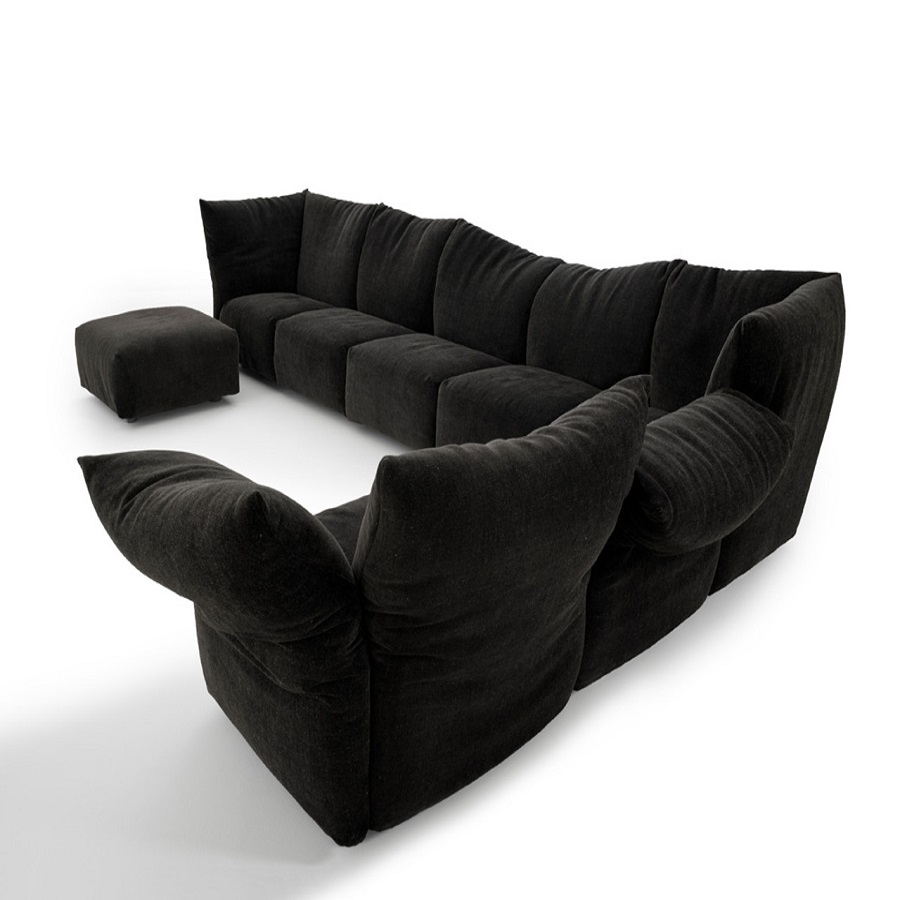
Additional Considerations
Exploring beyond standard sofas is key for tailored comfort and style in your home.
Special Couch Dimensions: Modular and Sleeper Sofas
Modular and sleeper sofas offer unique dimensions for versatile living. Modular sofas have varying section lengths for customizable fits, while sleeper sofas need extra room when unfolded for sleeping.
Armrest and Leg Height: Completing the Picture
Armrest and leg heights affect sofa style and comfort. Aim for armrests that support your arms and sofa legs that lift the piece to a preferred height.
Sofa Size and Room Proportions: Ensuring a Good Fit
Match your sofa size to the room’s scale. A sofa too large or small can disrupt room balance, so choose a size that maintains harmony in your space.
